Citizen Science: Project FeederWatch -- Count #12 Report 2019-2020 Season w/Original Photos
Citizen science is a great way to involve children and adults in discovery and contribute to scientific research and conservation. Project FeederWatch through Cornell University is a great way to get involved in citizen science. You can learn more at the Project FeederWatch website.
I typically watch birds on Saturday and Sunday. This is my report for 25-26 January 2020.
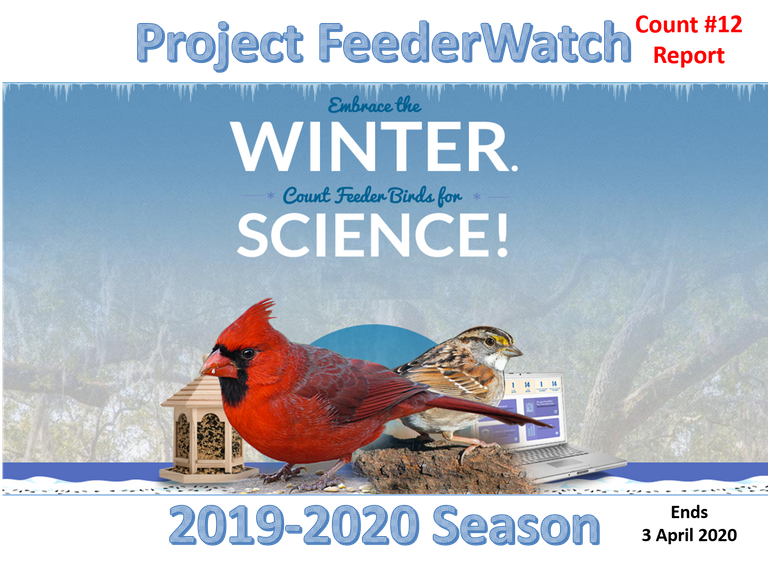
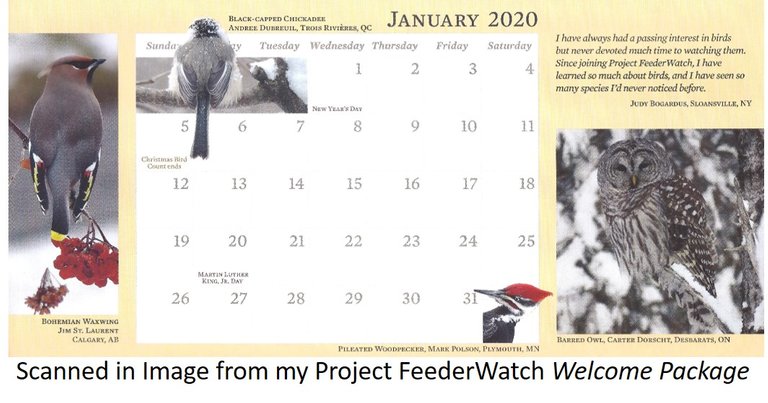
The 2018-2019 season goes through 3 April 2020.
Weather
Saturday, 25 January 2020
Saturday was mostly cloudy.
High: 32 (F) / 0 (C)
Low: 19 (F) / -7 (C)
Winds from the South
Average Wind Speed: 5.7 mph / 9 kph (Kilometers per hour)
Highest Gust: 16 mph / 26 kph
Sunday, 26 January 2020
Sunday was cloudy.
High: 44 (F) / 6 (C)
Low: 29 (F) / -1 (C)
Winds from the Southeast
Average Wind Speed: 3.6 mph / 5.8 kph
Highest Gust: 11 mph / 18 kph
Bird Watching Notes
There were reports of two Bald Eagles in the area but I did not see them.
On Saturday I saw the neighborhood coyote in the field behind the bird feeders.

Original Photo
Cooper's Hawk
This Cooper's Hawk watched over my bird feeders a lot this weekend. When there were no birds at the feeders I knew the hawk was nearby.

Original Photo

Original Photo
Range map for Cooper's Hawks throughout North America.
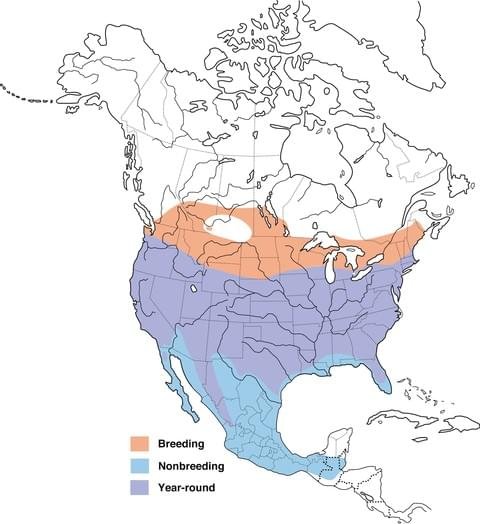
Image Source
You can learn more about the Cooper's Hawk at the "All About Birds" webpage.
Blue Jay
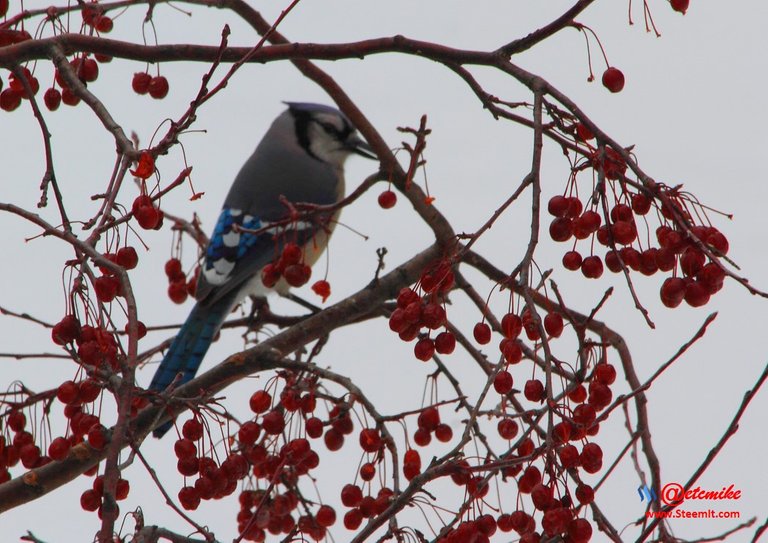
Original Photo
Range map for Blue Jays throughout North America.
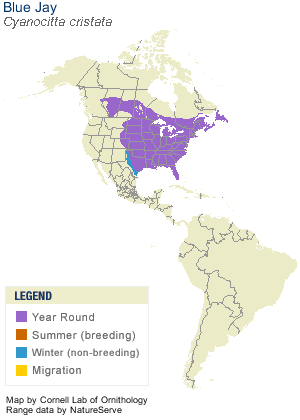
Image Source
You can learn more about the Blue Jay at the "All About Birds" webpage.
Northern Cardinal

Original Photo
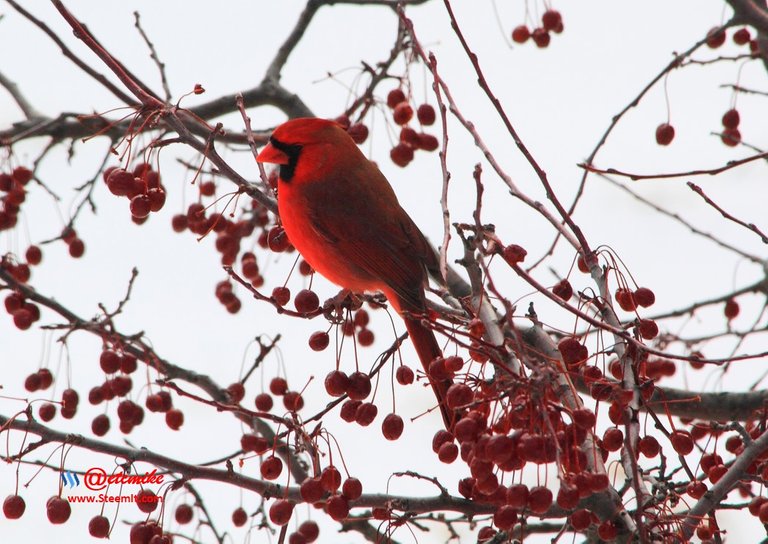
Original Photo

Original Photo

Original Photo
Range map for Northern Cardinals throughout North America.
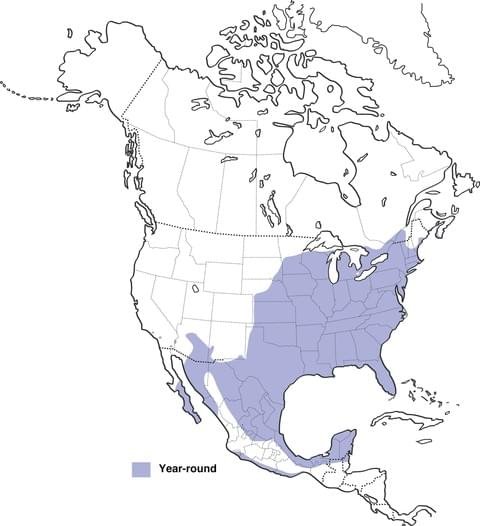
Image Source
You can learn more about the Northern Cardinal at the "All About Birds" webpage.
Dark-eyed Junco

Original Photo
Range map for Dark-eyed Juncos throughout North America.
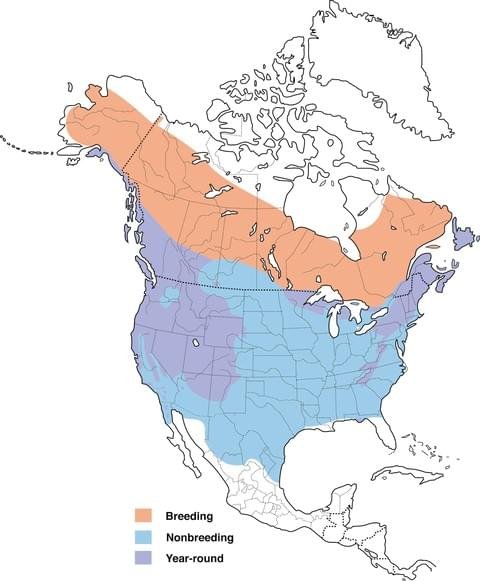
Image Source
You can learn more about the Dark-eyed Junco at the "All About Birds" webpage.
House Finch
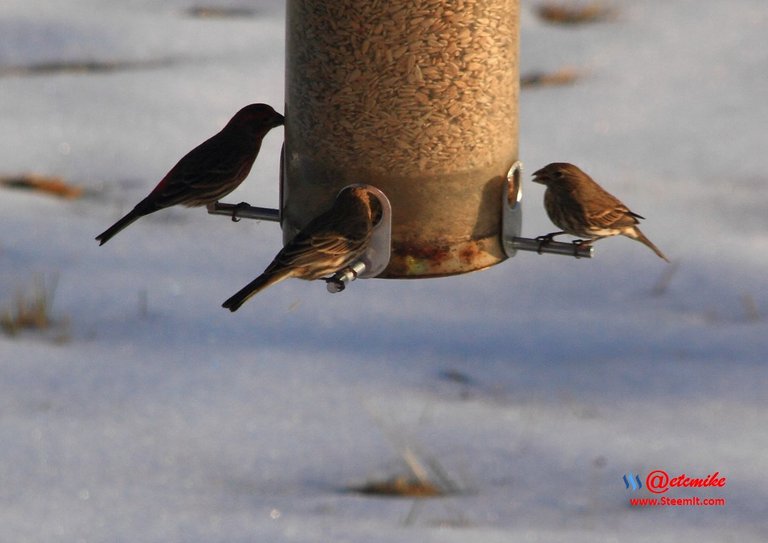
Original Photo
Range map for House Finches throughout North America.

Image Source
You can learn more about the House Finch at the "All About Birds" webpage.
House Sparrow

Original Photo
Range map for House Sparrows throughout North America.
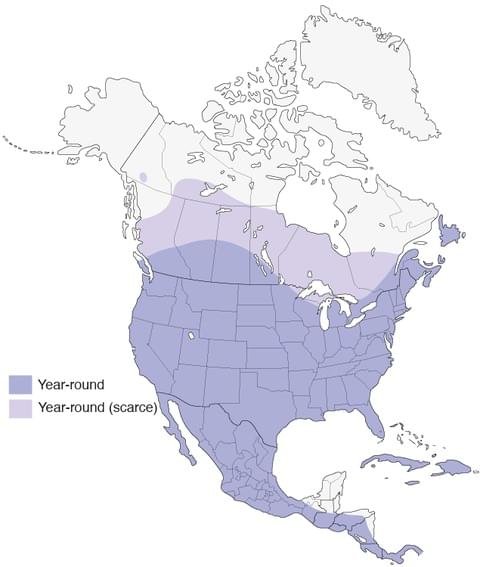
Image Source
You can learn more about the House Sparrow at the "All About Birds" webpage.
Bird Counts
My bird counts for the two-day period 25-26 January 2020.
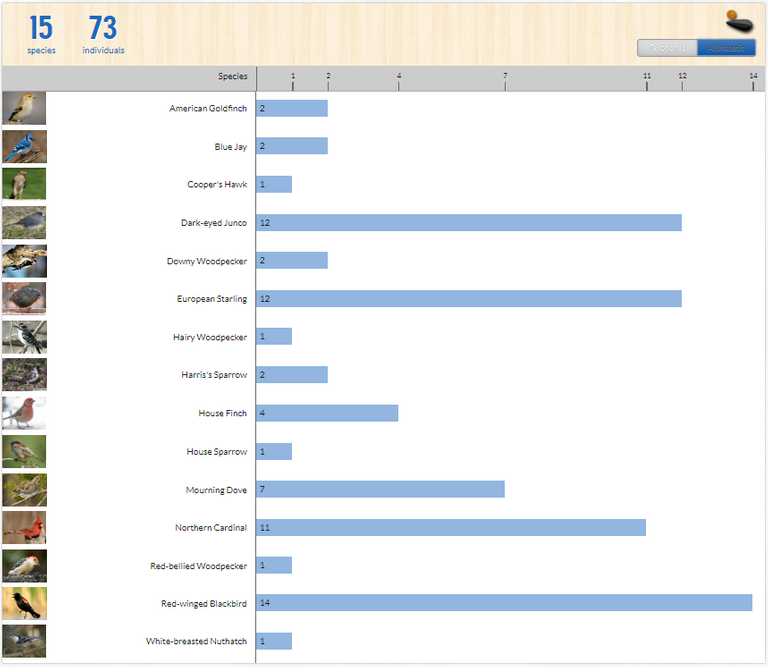
Snapshot from Project FeederWatch Bird Count Summary
Interactions
No interactions observed.
Summary of Counts This Season

Snapshot from Project FeederWatch Bird Count Summary
Signing Up for the 2019-2020 Season
Project FeederWatch is a great way to introduce children and adults to science and conservation through bird watching.
If you are interested in joining Project FeederWatch this season, you can learn more and sign-up at the Project FeederWatch website. During the 21 week season you will need to record your observations during two consecutive days each week.
Previous Project FeederWatch Post
Citizen Science: Project FeederWatch -- Count #11 Report 2019-2020 Season w/Original Photos
Sources
Project FeederWatch -- Collecting Bird Counts for North American Continent
eBird -- Collecting Bird Counts from around the World
Crossley ID Guide -- For identifying the birds of North America
National Oceanic and Atmosheric Administration -- For weather data
The Weather Channel -- For weather data
Use of Original Photos
I used the SteemIt icon in my photo credit to indicate these photographs were originally posted on SteemIt.
The photographs in this post are free to be used by anyone as long as the photo credit is left on the photographs.
Photo/Video Editing
Video editing performed with Adobe Primiere Elements 2018. Affiliate link to Amazon.com provided for your convenience.
Thanks Mike sir for sharing research project beautiful click,
Posted using Partiko Android
Cardinals are very beautiful birds. A pair used to come to our feeders; the female would wait in the tree and the male would bring food to her. I like blue jays as well but I never see them anymore. I only hear their caws in the summer. Is it true they're considered birds of prey? Someone told me that once.
It's interesting that house sparrows only live where people do. You won't see them in forests. At least I don't!
I have seen that behavior too among Northern Cardinals.
Blue Jays can be very aggressive. From All About Birds: Blue Jays
Have a great week!
Steem on,
Mike
Thanks, you too!
thank you for sharing a great project
Good project, thank you very much for sharing
Posted using Partiko Android
Saludos @etcmike, esto es extremo, como se adaptan estas aves al clima, aquí resalta indudablemente el Proyect Feeder Watch ya que la mayor parte de estas aves ya hubiesen muerto a falta de comida, Mis felicitaciones por esta gran labor…
Greetings @etcmike, this is extreme, how these birds adapt to the climate, here undoubtedly highlights the Project Feeder Watch as most of these birds would have already died for lack of food, My congratulations for this great work .
Sometimes I think we are altering the birds behavior. Instead of flying south were food is more available, birds may stick around longer here in the north because of bird feeders.
Have a great week!
Steem on,
Mike
I had very noisy coyotes in my yard this week. It is the first time I have been aware of them here.
It is amazing how still everything becomes when there is a hawk nearby.
Your photos are great, as always!
Thanks for posting to #featheredfriends !Tip
🎁 Hi @etcmike! You have received 0.1 STEEM tip from @melinda010100!
@melinda010100 wrote lately about: Fence And Wilted? Feel free to follow @melinda010100 if you like it :)
Sending tips with @tipU - how to guide.
This is a great post!! We really appreciate your work and efforts.
To support your work, we have also up-voted you using our DNA.Steem Curation Trail ✅!
We'd like to invite you to our) Server: DNA.
Server: DNA.
Our project will not be able to operate without support from people like you.
Have a nice day!
Best,
Team DNA 🧬
By the people ⚪ For the people